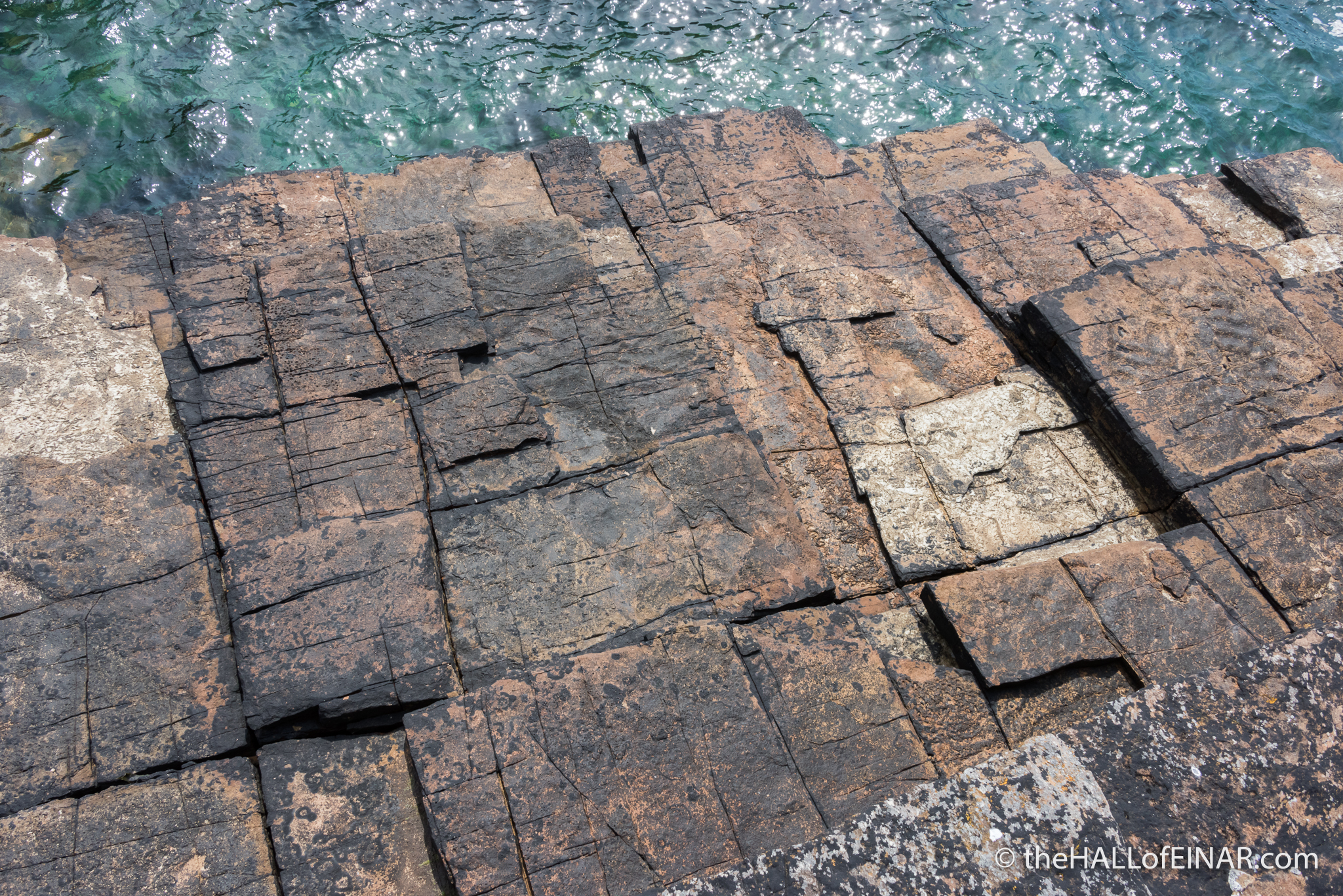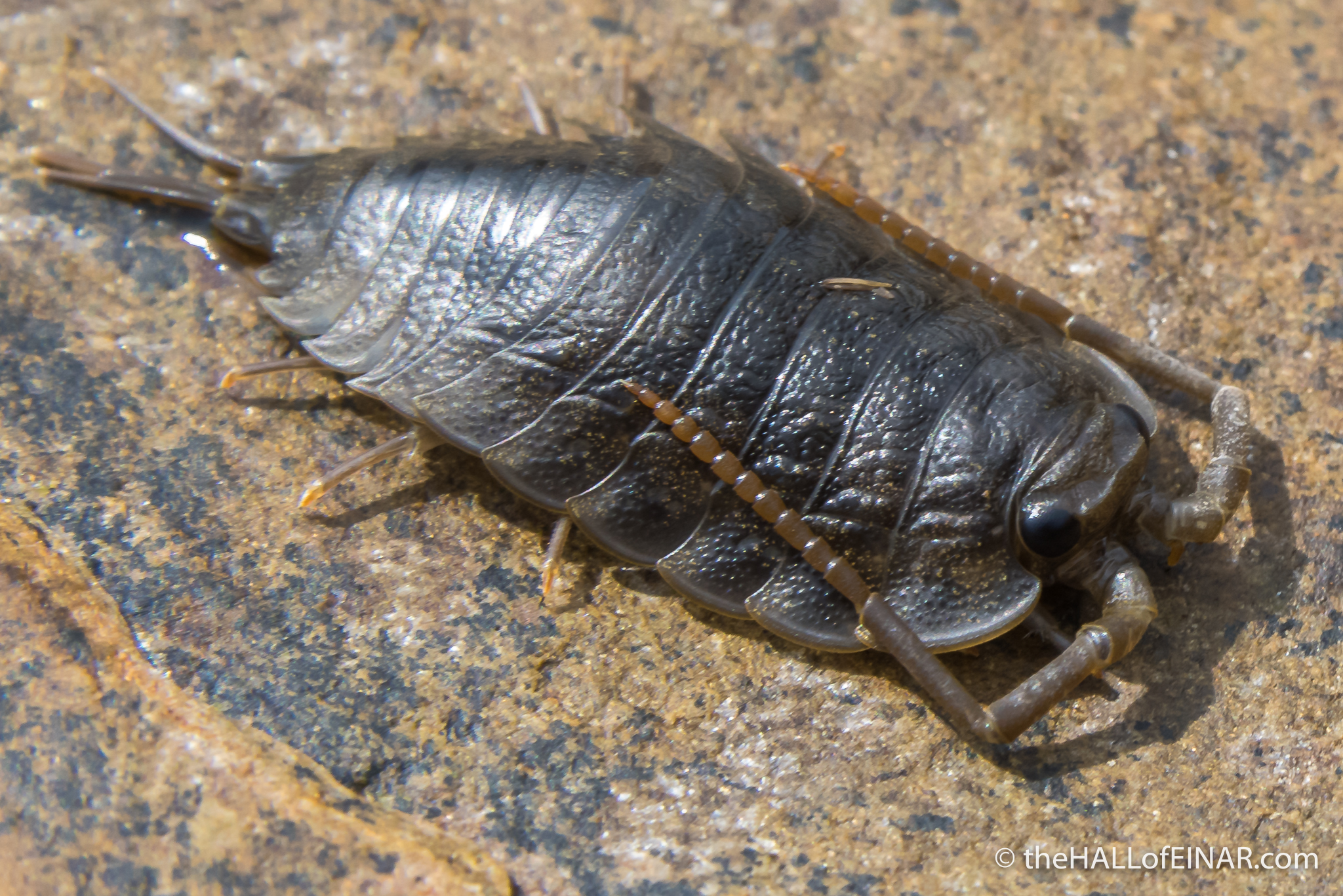Flagstones and Slaters
The rocks of Westray crack so neatly into flagstones it’s sometimes quite unnerving. In some places you could play chess on the flat surfaces the cracks are so regular.

They call it flagstone…
Looking into the cracks I see what looks to be a freakishly large Woodlouse. It’s over an inch long. I’ve never seen one so big. It’s a Sea Slater Ligia oceanica. They’re meant to be hidden under rocks during the day and only come out at night to munch on decaying seaweed like Bladderwrack. This one is out on the rocks as clear as day.

It’s 30mm long and has beautiful segmented antennae 20mm long. Its compound eyes are large and there are seven pairs of legs, which surely must get confusing.
It’s a topsy-turvy existence for Sea Slaters as they have no lungs but breath through pleopods on their bellies. These need to be kept permanently damp so Slaters dip the uropods on their tails into water to draw it up using capillary action. They also produce ammonia gas. Other animals find ammonia so toxic that they have to spend energy converting it to urea, like we do in our liver and kidneys so we can include it safely in urine. Sea Slaters don’t bother with all that and simply let ammonia gas pass out through their exoskeleton. So to be accurate Sea Slaters drink through their anus, breathe through flaps on their bellies and fart their wee out from all over their skin. I love them. What child of my age wouldn’t?
I do fear for its safety though. There’s a Rock Pipit ‘pipping’ nearby and I think that it could be not long for this world – although it’s so large I’m not sure swallowing it whole would be possible for a smallish bird. It wanders back into a crack and I leave it alone. It’s safe, for now.